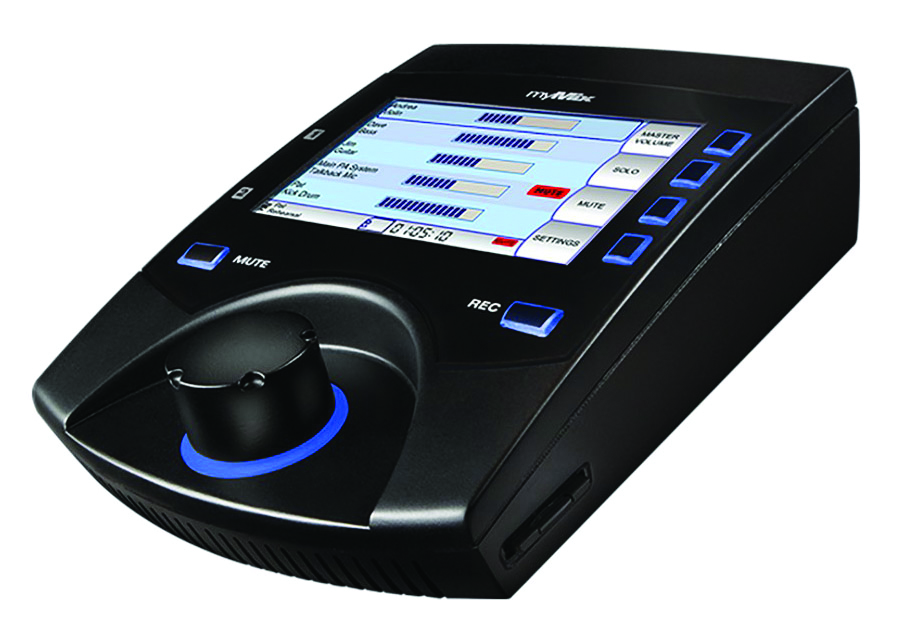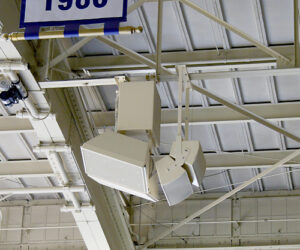In-ear monitor (IEM) systems and personal monitor mixers work with earpieces (“earbuds”) and sometimes headphones to deliver mixes to performers. There are several advantages, including reducing feedback issues from having fewer (or no) loudspeakers generating output on stage and reducing the need to carry, setup and strike heavy monitor wedges.
Performers can also better hear exactly what they want in their mixes because the monitor engineer can utilize the entire stereo field, and with properly fitted universal or custom-molded earpieces, stage noise can be can attenuated. Wireless IEM systems provide greater freedom of movement while allowing users to hear the exact same mix no matter where they’re located on stage.
However, some performers don’t like the degree of isolation afforded by this monitoring platform. Some eschew it all together, while others prefer a hybrid approach of “ears” and traditional wedges/side fills. They also need to be aware of volume levels and the potential for hearing damage – isolation from stage noise can be a great thing, but only if the sources at the ears aren’t too loud. The sense of isolation can be relieved by mixing some ambient microphones into the monitor mix.
Wireless IEM systems provide additional freedom of movement while retaining a clean, consistent monitor mix. Note that, as the term “wireless” makes clear, these systems use RF spectrum, so they need to be coordinated along with wireless mic, instrument, and intercom systems at every show.
Meanwhile, personal mixers allow musicians to select and custom-mix 16 channels or more (discrete channels or sub-mixes) of digital audio from all available channels, adjust levels, pan, EQ and effects for each channel, plus save and recall presets of previous mixes. These systems are increasingly sophisticated, and in many cases offer the ability to interface with networking protocols.
Another aspect is giving performers control over their own monitor mixes using Wi-Fi access to some mix parameters of a digital console or via personal mixers. Many digital consoles allow remote access via laptops, tablets and smartphones, and a lot of sound techs have been quick to embrace this technology, which allows them to leave the mix position and walk around the venue while still being able to adjust mix parameters as needed.
It didn’t take long for manufacturers to add apps that also allow stage performers to access individual mixes and make adjustments to their own mixes. The majority of the apps let the audio crew lock out and restrict access to certain parameters (such as to another performer’s monitor mix).
Meanwhile, there are two basic types of IEM earpiece transducers. Dynamic full-range drivers tend to have a warmer sound with a natural roll-off in the high end, while balanced-armature drivers can be less efficient at low frequencies. Most manufacturers of balanced-armature earpieces offer several designs, each with a different response.
Besides sound quality, fit and comfort are vital since they’re worn for hours at a time, and their ability to seal out sound on louder stages can allow performers to monitor at lower volumes to avoid hearing loss. However, even custom molds are no guarantee that a performer’s hearing will be protected, since the tendency is still to turn it up.
Some savings can be achieved by using generic-fit earpieces with custom tips that provide much of the comfort and isolation of a custom mold at a lower cost, while allowing the earpieces to be reused later with generic tips or with another performer’s custom tips.
Enjoy this look at recent wireless IEM earpieces, followed by IEM/personal monitoring systems.
ENHANCED LISTING

Audix A10
audixusa.com
The new Audix A10 line of in-ear monitors includes the A10 – intended to serve as a detailed in-ear studio monitor – and the A10X, which offers extended bass response. Both incorporate point source 10 mm drivers with rare-earth magnets that are designed to be phase coherent and deliver a smooth, linear response with exceptional fidelity.
They’re housed in a tuned and vented composite shell, with a reinforced wrap-around cable that holds the shell firmly in place. The twisted and braided silver-coated, oxygen-free copper cable has a soft-coat jacket and is detachable. Custom silicone ear tips have been engineered to provide a comfortable fit and maximum isolation.
TECHNOLOGY FOCUS: Gold-plated MMCX connectors allow for 360-degree cable rotation for quick and easy positioning.
OF NOTE: Three pairs of ear tips are supplied, as is a protective carrying case. The cable measures almost 4 feet (1.2 meters) long.
KEY SPECS:
Number & Type Of Drivers: Single 10 mm with rare-earth magnets
Impedance: 35 ohms
Sensitivity: 105 dB (A10), 107 ohms (A10X), both at 1 mW
Detachable Cables: Yes

Audio-Technica ATH-E70
audio-technica.com
Number & Type Of Drivers: Three balanced-armature drivers
Impedance: 39 ohms
Sensitivity: 109 dB/1 mW
Detachable Cables: Yes
Other Models: ATH-E50, more
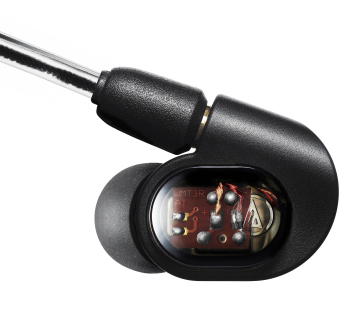
Shure SE215
shure.com
Number & Type Of Drivers: Single Dynamic MicroDriver
Impedance: 17 ohms
Sensitivity: 107 dB/1 mW
Detachable Cables: Yes
Other Models: SE846, SE535, SE425, KSE1200, KSE1500
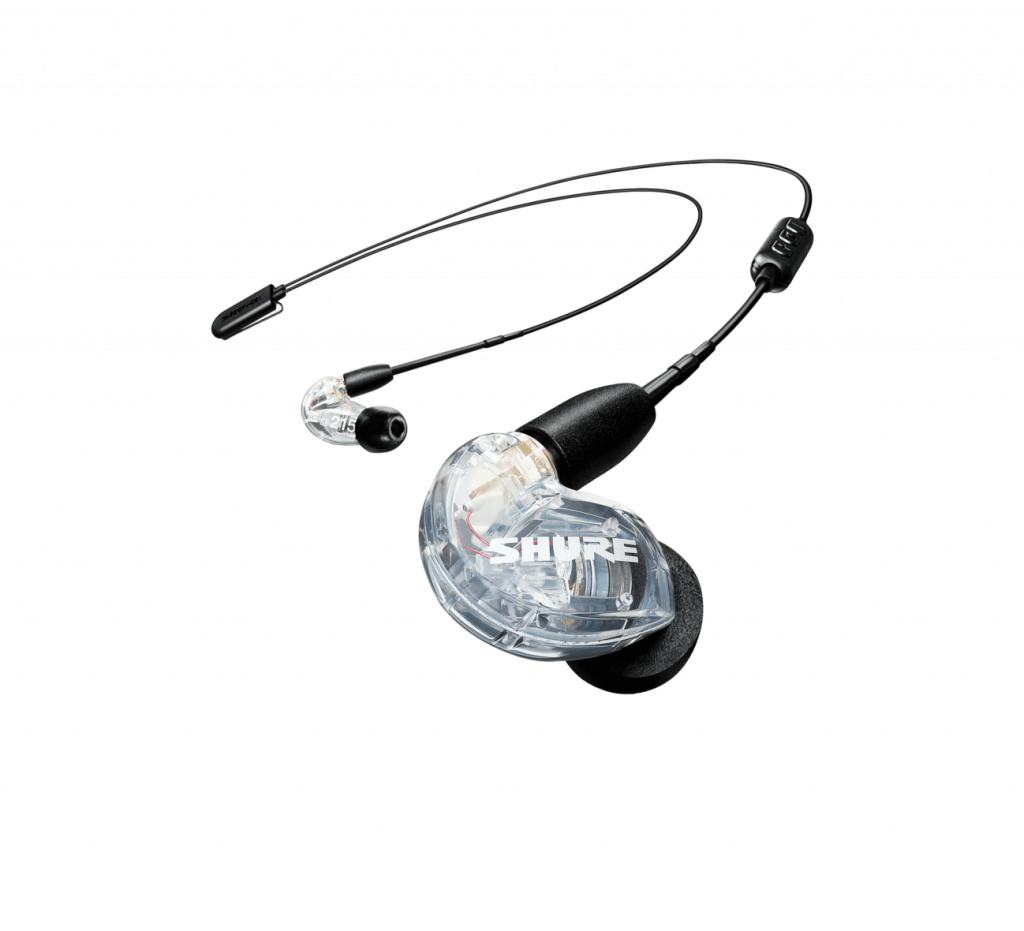
Future Sonics MG5 FX
futuresonics.com
Number & Type Of Drivers: Single 10 mm proprietary Voice Coil design dynamic transducer
Impedance: 32 ohms
Sensitivity: 110 dB/30 Hz
Detachable Cables: Yes
Other Models: MG5 HX, MG6 FX, MG6 HX, more
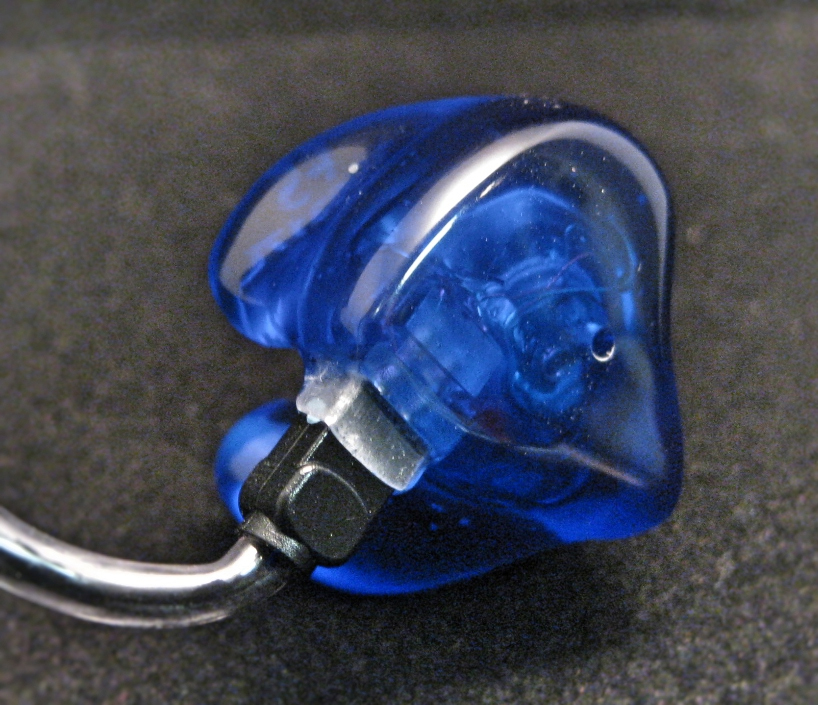
Ultimate Ears UE 5 Pro
ultimateears.com
Number & Type Of Drivers: Dual balanced armatures with 2-way crossover
Impedance: 21 ohms
Sensitivity: 119 dB/1 mW
Detachable Cables: Yes
Other Models: UE 6 Pro, UE 7 Pro, UE 11 Pro, UE 18+ Pro, UE Live
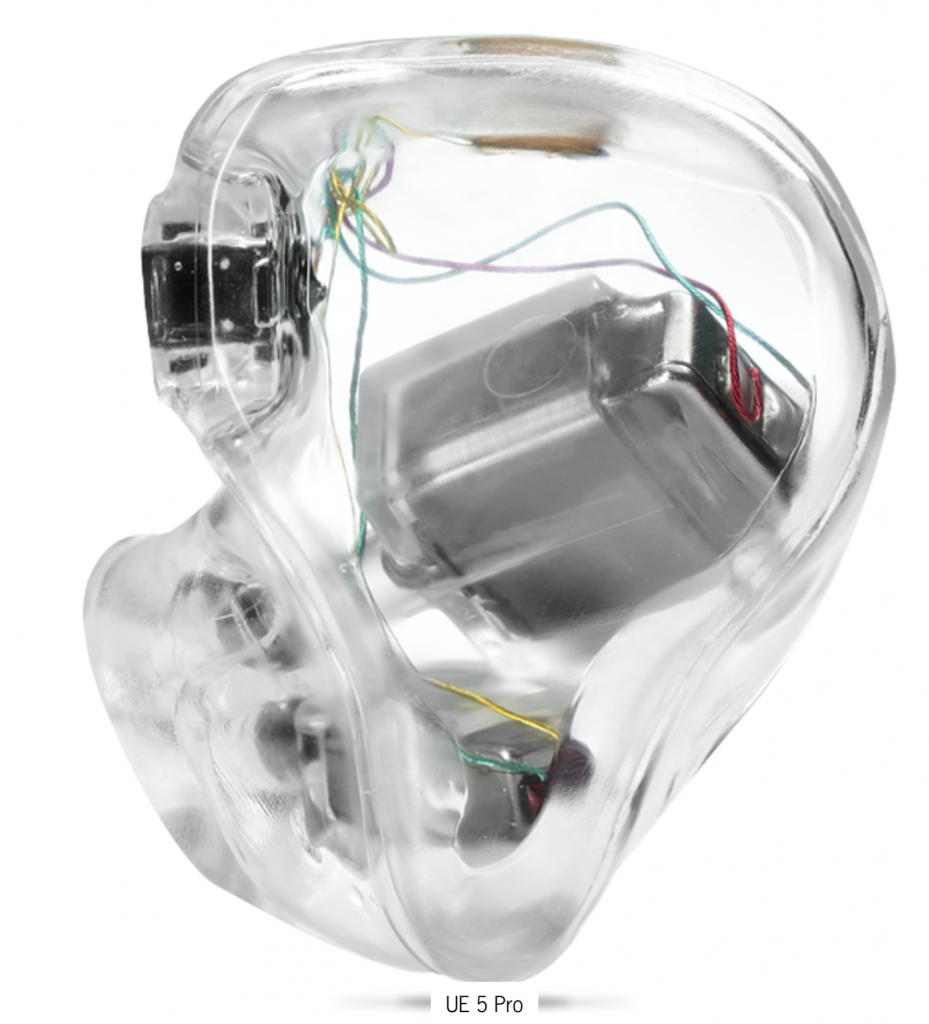
Mackie MP-240
mackie.com
Number & Type Of Drivers: Single dynamic LF, single balanced armature HF
Impedance: 32 ohms
Sensitivity: 94 dB/1mW
Detachable Cables: Yes
Other models: MP-120, MP-220, MP-320, MP-360, MP-460
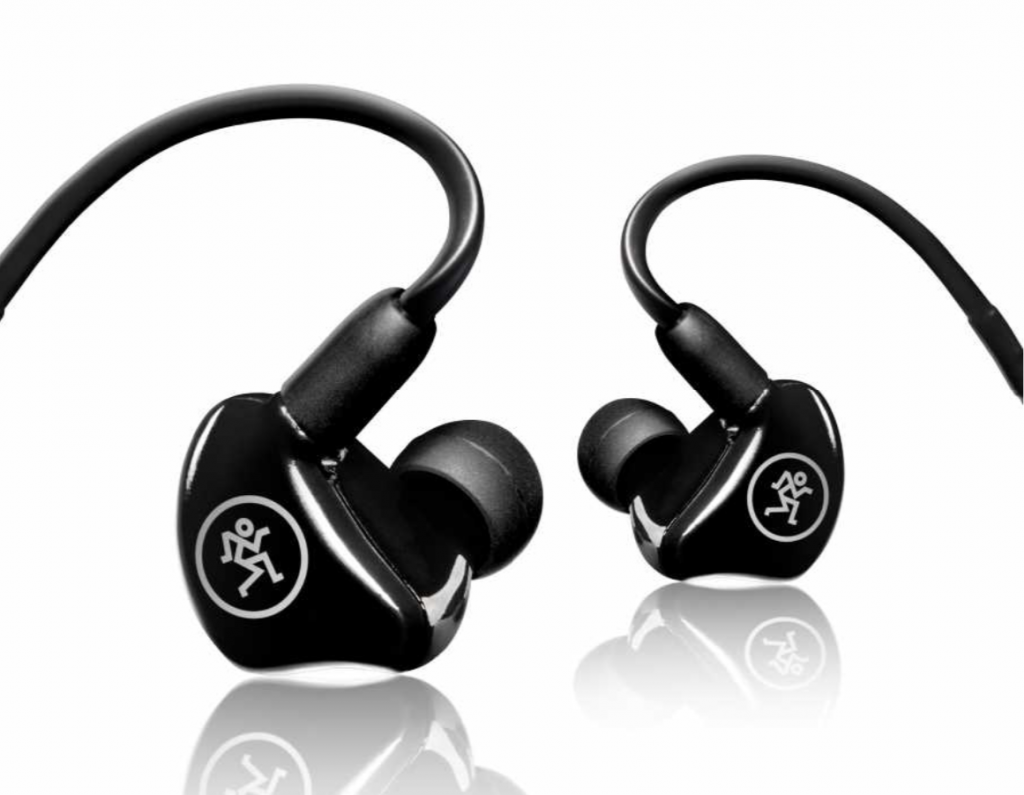
Sennheiser IE 500 PRO
sennheiser.com
Number & Type Of Drivers: Single 7 mm broadband dynamic transducer
Impedance: 16 ohms
Sensitivity: 126 dB/1 mW
Detachable Cables: Yes
Other Models: IE 400 PRO, IE 40 PRO
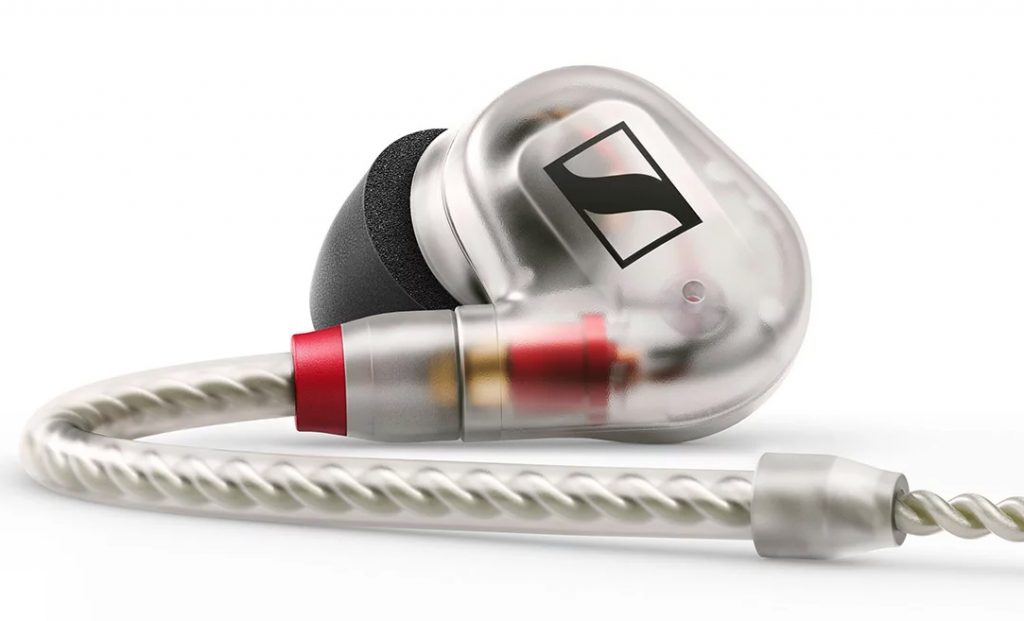
JH Audio JH3X PRO
jhaudio.com
Number & Type Of Drivers: Dual LF, single HF
Impedance: 18 ohms
Sensitivity: 119 dB/1mW
Detachable Cables: Yes
Other models: JH10X3, JH11PRO, JH13v2, JH16v2, more
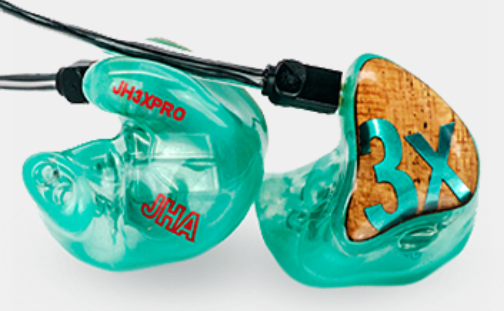
64 Audio A18s
64audio.com
Number & Type Of Drivers: 18 balanced-armature drivers
Impedance: 8 ohms
Sensitivity: 106 dB/1 mW
Detachable Cables: Yes
Other Models: A18t, A12t, more
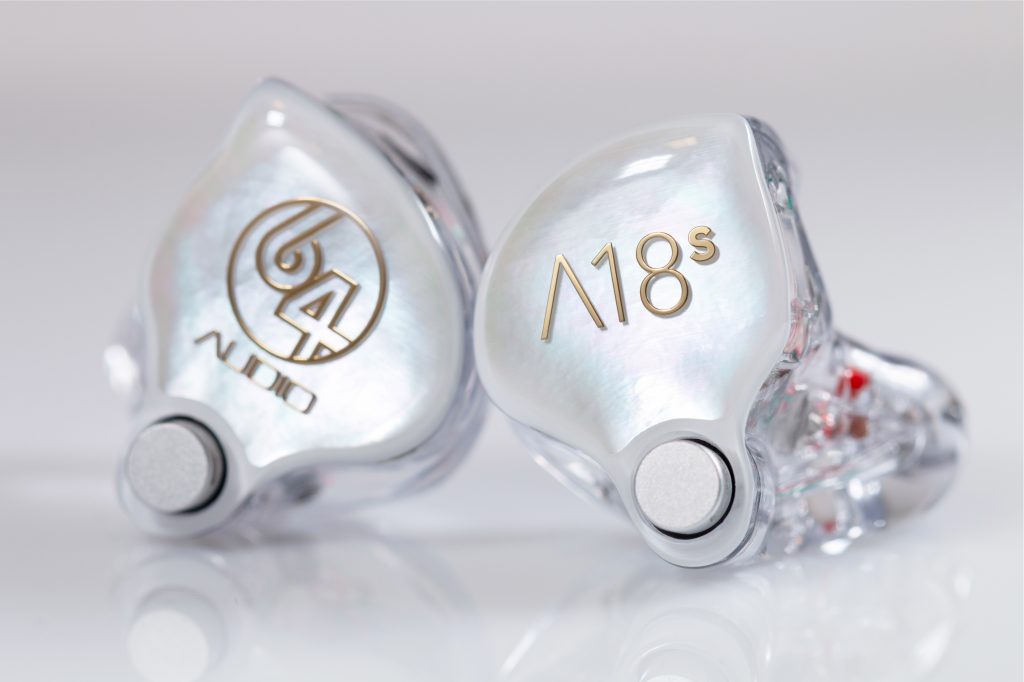
Westone UM Pro 50
westone.com
Number & Type Of Drivers: Five proprietary balanced-armature drivers
Impedance: 45 ohms (at 1 kHz)
Sensitivity: 115 dB/1 mW
Detachable Cables: Yes
Other Models: UM Pro 20, AM Pro 10, more
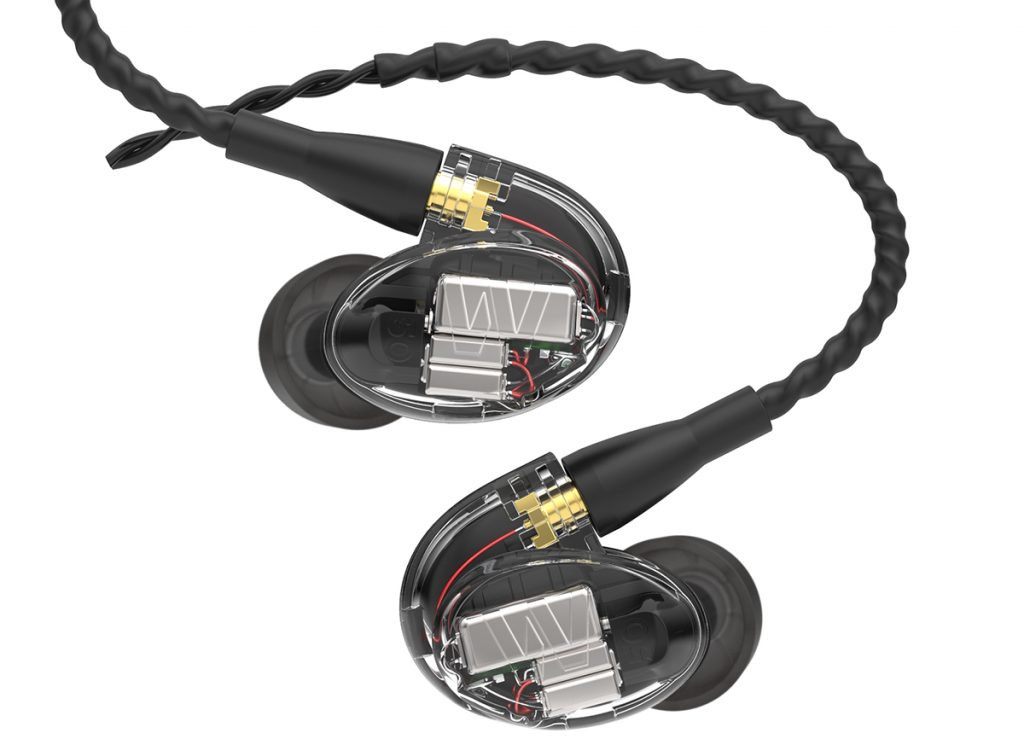
Sensaphonics 3MAX
sensaphonics.com
Number & Type Of Drivers: Three balanced-armature drivers (2 LF, 1 HF)
Impedance: 14.2 ohms
Sensitivity: 114 dB/0.1 volt
Detachable Cables: Yes
Other Models: 2MAX, 2X-S, D2, more
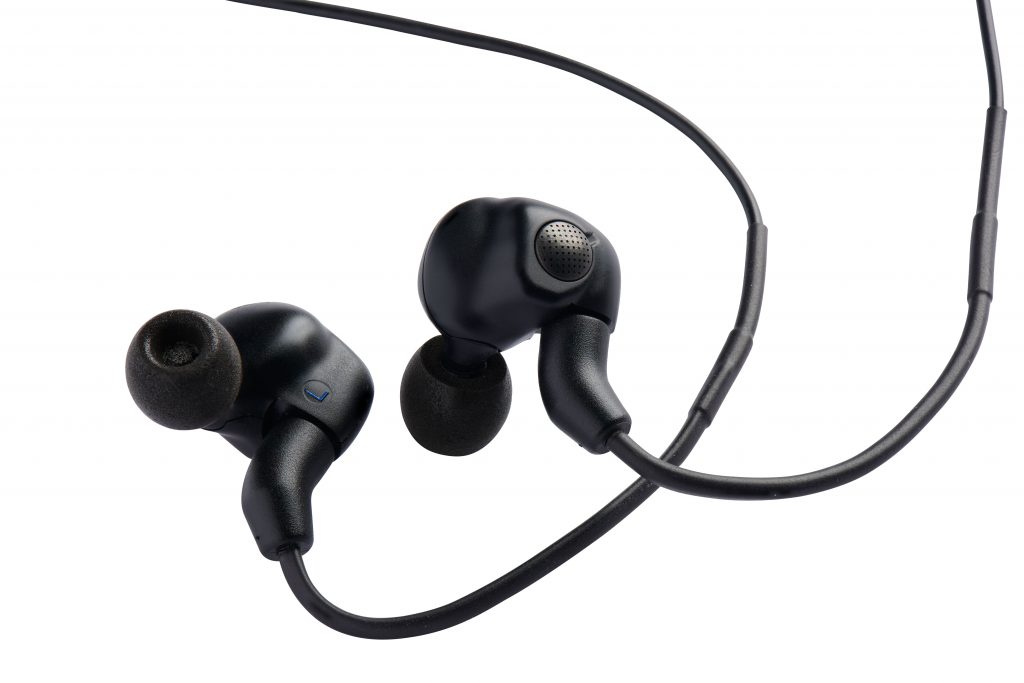
Wireless/Personal Monitor Systems
Audio-Technica M3
audio-technica.com
Components: M3T transmitter and M3R receiver
RF Power: 10/50 mW, switchable
Audio Power: 65 mW at 32 ohms
Frequency Groups (U.S.): 575–608, 614–647 MHz
Tuning Range: 1,321 selectable frequencies
Of Note: Volume and mix control of two independent signals; any number of receivers can operate on same frequency with single transmitter; limiter (defeatable) helps protect from sudden peaks; up to 16 simultaneous systems per frequency band
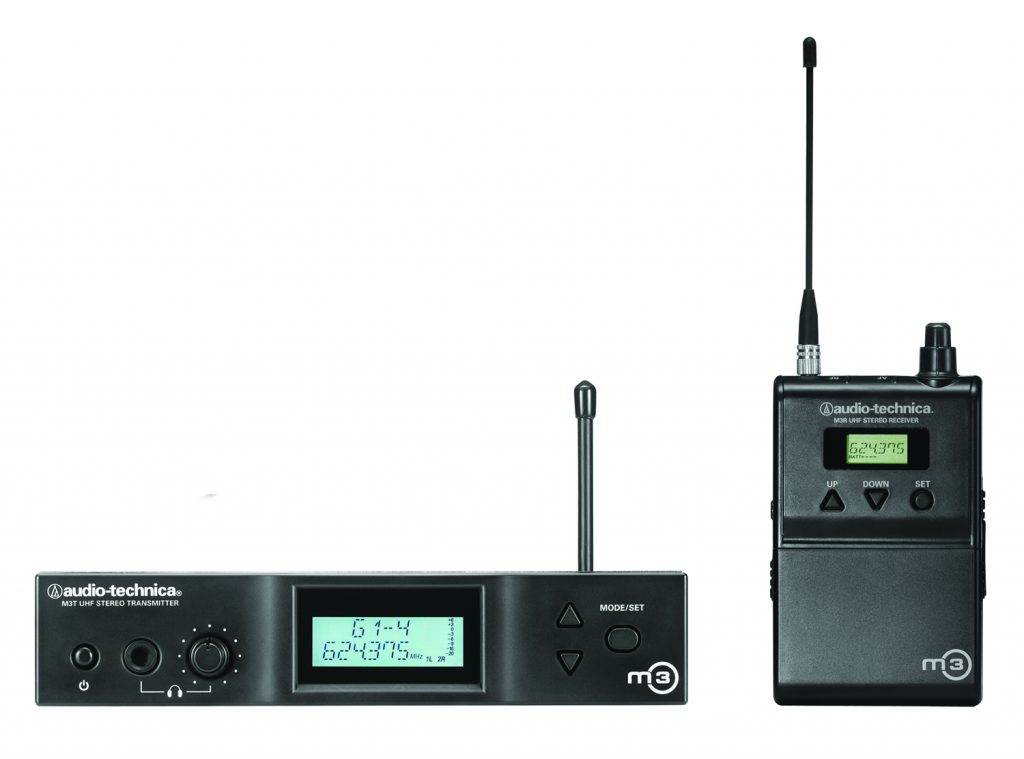
Shure PSM 1000
shure.com
Components: P10T dual-channel transmitter, P10R receivers
RF Power: 10/50/100 mW (U.S.), switchable
Audio Power: 100 mW (per output) at 32 ohms
Frequency Groups (U.S.): Several bands within 470–690 MHz; also 944–952 MHz (X1 band in U.S.)
Tuning Range: 72 – 80 MHz (region dependent)
Receiver Batteries: 2 x AA batteries or SB900A lithium-ion rechargeable battery
Of Note: Networked control via Ethernet simplifies setup and enables remote control via Wireless Workbench software; backwards compatibility with PSM 900 receivers; CueMode allows monitoring of different stage mixes and storing up to 20 channels on a bodypack
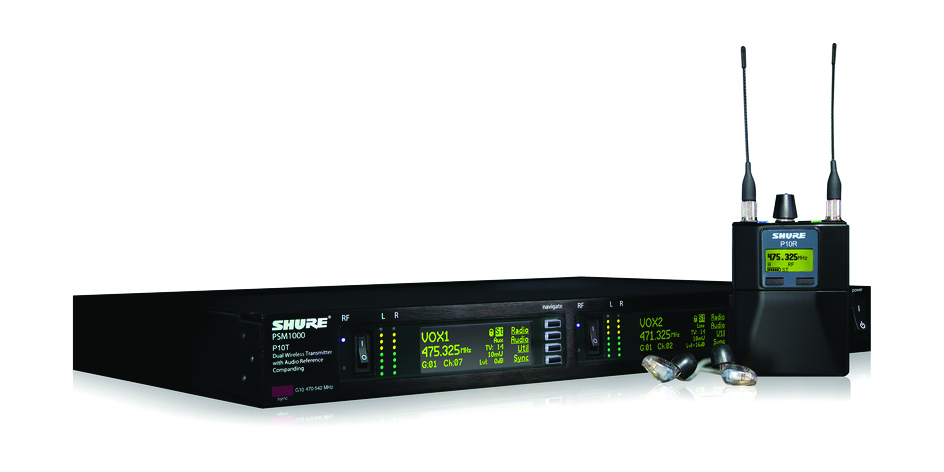
MIPRO MI-909T/R
avlex.com, mipro.com.tw
Components: MI-909T transmitter and MI-909R receiver
(digitally-encrypted)
RF Power: 10/100 mW, switchable
Audio Power: 120 mW at 16 ohms
Frequency Group (U.S.): 480–604 MHz
Tuning Range: 64 MHz
Receiver Batteries: 2 x AA alkaline
Of Note: Menu settings for input sensitivity, encryption, and EQ; auto-scanning for interference-free frequencies; dual-antenna diversity; selectable HI, LOW or OFF (mute) output power; up to 16 compatible channels within the same frequency group
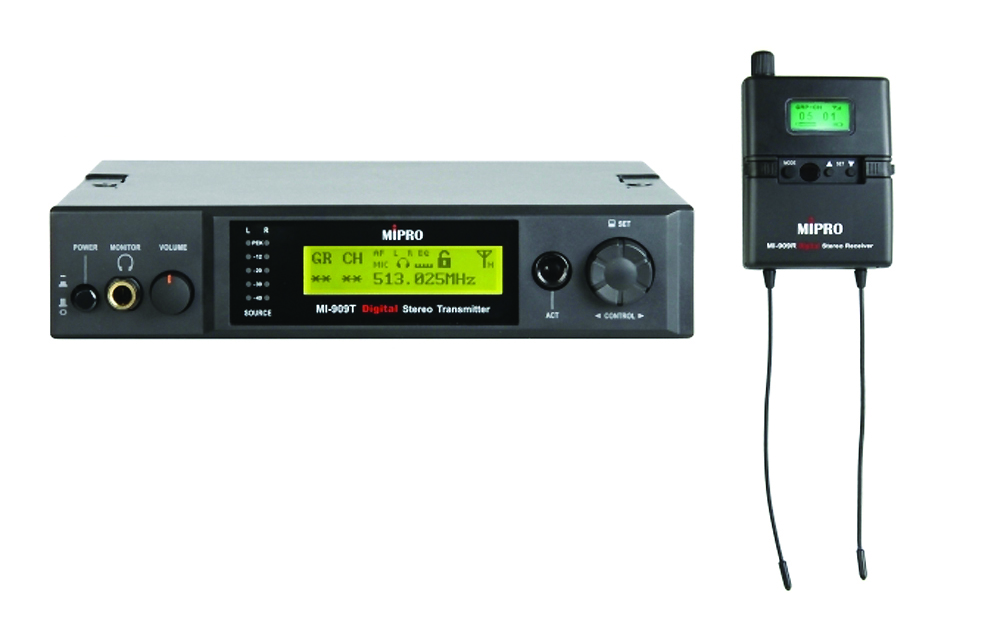
Allen & Heath ME-1
allen-heath.com
For use with up to 40 sources from the company’s dLive, iLive, GLD Series and U digital consoles, and with the ME-U hub, it can be utilized with other digital mixers via Dante, EtherSound or MADI. There’s also an Aviom compatibility mode.
Sixteen (16) backlit keys can be assigned to a single source (mono or stereo) or to a group. Preset store/recall is enabled or disabled per key. Levels, pan, mutes and key assignments can be stored and recalled, while presets for different bands and application scenarios can be copied to USB key, or the whole configuration saved.
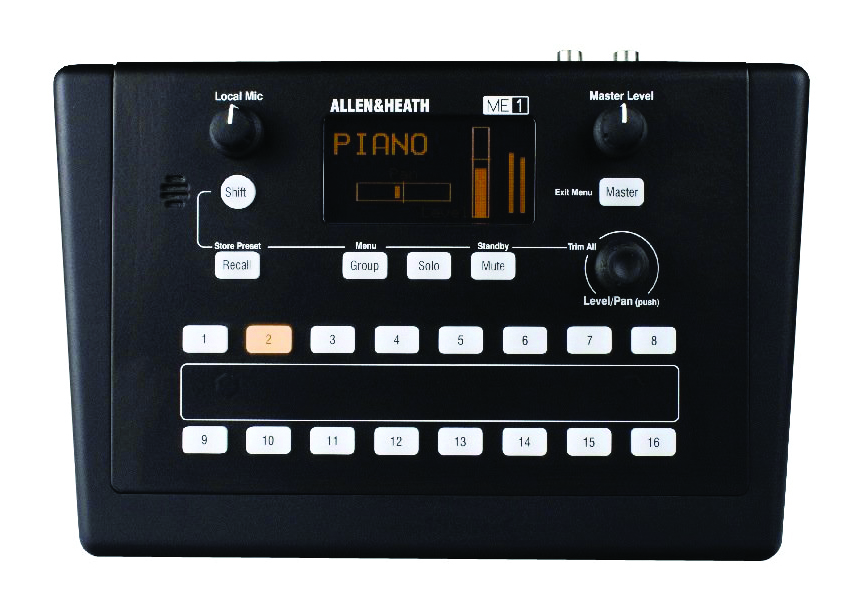
Lectrosonics Duet
lectrosonics.com
Components: M2T dual-stereo transmitter, M2R receivers
RF Power: 10/25/50 mW switchable
Audio Power: 250 mW
Frequency Groups (U.S.): 470.100 – 607.975 MHz
Receiver Batteries: 2 x AA lithium batteries
Of Note: Dante enabled; 4 audio inputs on 2 stereo carriers with each input selectable between analog or Dante; IR speeds setup; machined aluminum receiver with color screen; compatible with Lectrosonics Wireless Designer Software
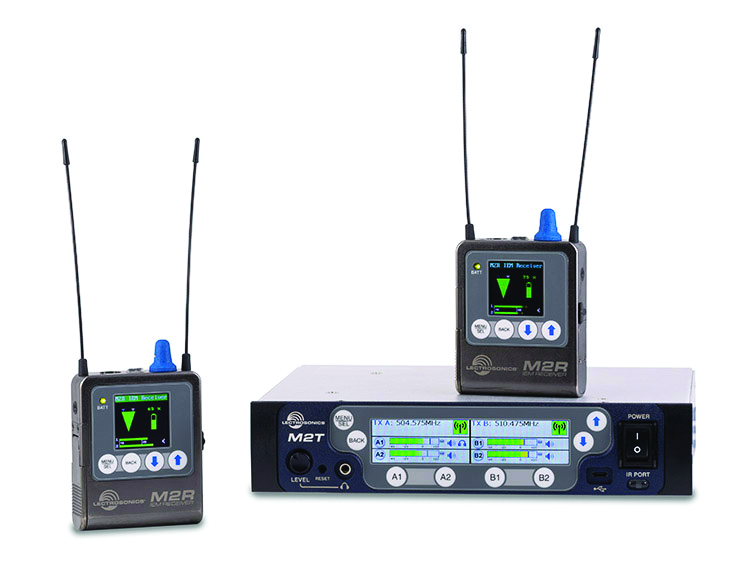
Sennheiser ew IEM G4
sennheiserusa.com
Components: SR IEM G4 transmitter, EK IEM G3 receiver
RF Power: 10/30/50 mW
Audio Power: 2 x 100 mW at 32 Ohms
Frequency Groups (U.S.): 566–608 MHz
Tuning Range: Up to 42 MHz; 1,680 frequencies
Receiver Batteries: 2 x AA alkaline or BA2015 rechargeable pack
Of Note: Frequency bank system with up to 16 compatible frequencies; automatic frequency scan; enhanced AF frequency range; compatible with Sennheiser Wireless Systems Manager software; backwards compatibility with several models
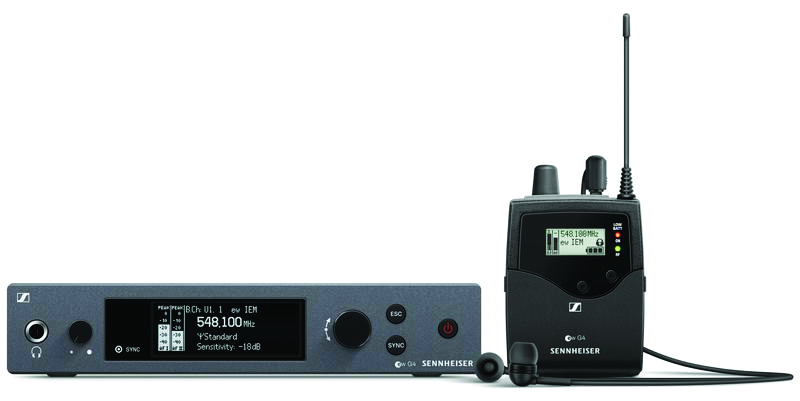
PreSonus EarMix 16M
presonus.com
A 16 x 2 AVB-networked unit designed to work with the company’s StudioLive Series III mixers and compatible with other AVB-enabled systems. It accepts 16 mono channels of input. Channel grouping and stereo channel linking foster creation of custom mixes for each musician, offering limiting and 3-band EQ with sweepable midrange frequency to each channel as well as to the main mix.
There’s also the ability to store and recall up to 16 mix scenes. The external power supply is joined by Power over Ethernet (PoE), which enables network cables to carry electrical power. A pair of AVB jacks enable users to chain multiple EarMix 16Ms while also connecting to a StudioLive Series III mixer.

myMix
mymixaudio.com
The main building block for any myMix system can be used stand alone or connected to an Ethernet switch as a system with up to 250 devices and 500 channels. It can be integrated into any existing sound system with any protocol (Dante, MADI, analog, digital, etc.).
Users select from all available channels on the network and create their own individual stereo mix. Each channel includes volume, tone control, effects send, pan, solo and mute. There’s also mixing via any web browser device (iPad, Mac, PC, smartphone, etc.).
